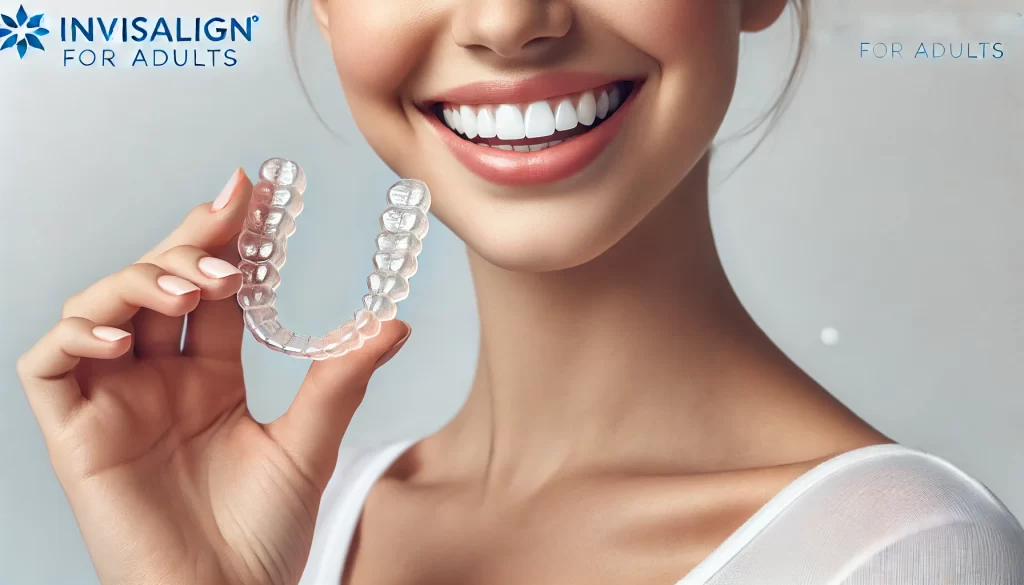Table of Contents
Invisalign is popular for those looking to straighten their teeth without traditional braces. But how much does Invisalign cost without insurance? The answer might surprise you. Many people are unaware of the expenses when insurance isn’t part of the equation. In this article, we’ll break down the factors affecting Invisalign’s price, alternatives, and how you can manage the cost, ensuring you’re fully informed before making a decision.
What is Invisalign, and Why is it Popular?

Invisalign is a modern alternative to metal braces, using clear aligners to straighten teeth over time. It has become the preferred option for many because it’s almost invisible, comfortable, and can be removed when eating or cleaning teeth. But with all its benefits, everyone asks one question: how much does Invisalign cost without insurance?
How Much Does Invisalign Cost Without Insurance? The cost can vary depending on several factors, typically from $3,000 to $7,000. This amount depends on the complexity of your treatment, your location, and the experience of your orthodontist or dentist. Some individuals may need fewer aligners, while others require more prolonged treatment, impacting the overall cost.
Factors That Affect the Cost of Invisalign
Several elements can affect how much does Invisalign costs without insurance.:
- Location: The cost of dental treatments can vary significantly depending on where you live. For example, Invisalign in a major city may be more expensive than in a rural area.
- Treatment Length: The longer the treatment, the more aligners you will need, which increases the cost.
- Complexity of Treatment: Some cases require more intensive treatment, such as correcting severely crooked teeth or an overbite. These more complex cases may cost more than simpler ones.
- Orthodontist Fees: Every orthodontist has their pricing structure, and more experienced professionals might charge higher fees.
Is Invisalign Worth the Investment?

If you’re paying out of pocket, it’s normal to wonder if Invisalign is worth the price. While the upfront cost may seem high, many people find the benefits outweigh the expense. Not only is Invisalign less noticeable than traditional braces, but it’s also more comfortable. Additionally, since Invisalign can be removed, it’s easier to maintain oral hygiene throughout treatment.
Benefits of Invisalign
- Clear Aligners: Nearly invisible, so people may not even notice you’re wearing them.
- Removable: You can take them out when eating, drinking, brushing, or flossing, making it easier to maintain oral hygiene.
- Comfortable: Invisalign aligners are made from smooth plastic, which is more comfortable than the brackets and wires of traditional braces.
Are There Payment Plans for Invisalign Without Insurance?
The good news is that many orthodontists offer payment plans to make Invisalign more affordable. You don’t have to pay the entire amount upfront. Instead, you can spread out the payments throughout the treatment. Some clinics offer 0% interest financing, making the cost more straightforward to manage without insurance.
Health Savings Accounts (HSA) and Flexible Spending Accounts (FSA)
If you have a Flexible Spending Account (FSA) or a Health Savings Account (HSA), you can use those funds to cover some or all of the Invisalign costs. These accounts allow you to set aside pre-tax money for medical expenses, making paying for Invisalign without insurance more manageable.
Comparing Invisalign Costs to Traditional Braces
Many wonder how the cost of Invisalign without insurance compares to traditional metal braces. On average, traditional braces can cost between $2,500 and $6,000, depending on the severity of the case. While braces are slightly cheaper, they are more visible and less comfortable. Invisalign is an excellent option for those investing more in comfort and aesthetics.
Which is Better for You: Invisalign or Braces?
Choosing between Invisalign and traditional braces depends on your needs and preferences. Invisalign without insurance is best for those who prioritize aesthetics and comfort, while conventional braces may be a more affordable option for complex cases.
Are There Any Cheaper Alternatives to Invisalign?
If the cost of Invisalign without insurance seems too high, there are other options you might consider. Some people opt for mail-order clear aligners like SmileDirectClub or Candid, which can be more affordable, with prices ranging from $1,500 to $3,500. However, these alternatives may not be suitable for everyone and lack the direct supervision of an orthodontist.
Should You Choose Cheaper Alternatives?
While cheaper alternatives can save money, they might not offer the same level of care as Invisalign. It’s essential to consult with a dental professional before deciding whether these options suit you.
How to Save on Invisalign Costs Without Insurance

Here are some tips to help you manage the cost of Invisalign without insurance:
- Compare Prices: It’s always a good idea to shop around and get quotes from several orthodontists. Prices can vary significantly.
- Payment Plans: As mentioned earlier, many orthodontists offer financing options, allowing you to spread the cost over several months.
- Use FSA or HSA Funds: If you have an FSA or HSA, use those funds to cover part of the cost.
- Dental Schools: Some dental schools offer Invisalign treatment at a lower cost, performed by students under the supervision of experienced orthodontists.
Also Read: How Much Does It Cost to Remove a Tattoo? The Shocking Truth
Can you use a discounted dental plan for Invisalign?
While traditional dental insurance may not cover Invisalign, some discount dental plans might offer reduced rates for orthodontic treatments, including Invisalign. These plans often provide a percentage discount on the total cost. It’s worth checking if any local dental clinics accept discount plans to help lower How Much Does Invisalign Cost Without Insurance?
So, How Much Does Invisalign Cost Without Insurance? The final amount can range from $3,000 to $7,000, depending on location, treatment length, and complexity. While the cost may seem high, many people find the investment worthwhile due to the benefits of clear aligners, such as comfort, aesthetics, and convenience.
If you’re considering Invisalign but are worried about the cost, explore payment plans, FSAs, or HSAs to help make it more affordable. If you’re looking for a cheaper alternative, consider mail-order clear aligners, but consult a professional to see if they’re right for you. Remember, How Much Does Invisalign Cost Without Insurance?
Invisalign without insurance can be a life-changing investment, giving you the straight, beautiful smile you’ve always wanted. So, now that you know the answer to How Much Does Invisalign Cost Without Insurance?, it’s time to take the next step and consult an orthodontist to see if Invisalign is the right choice for you!




